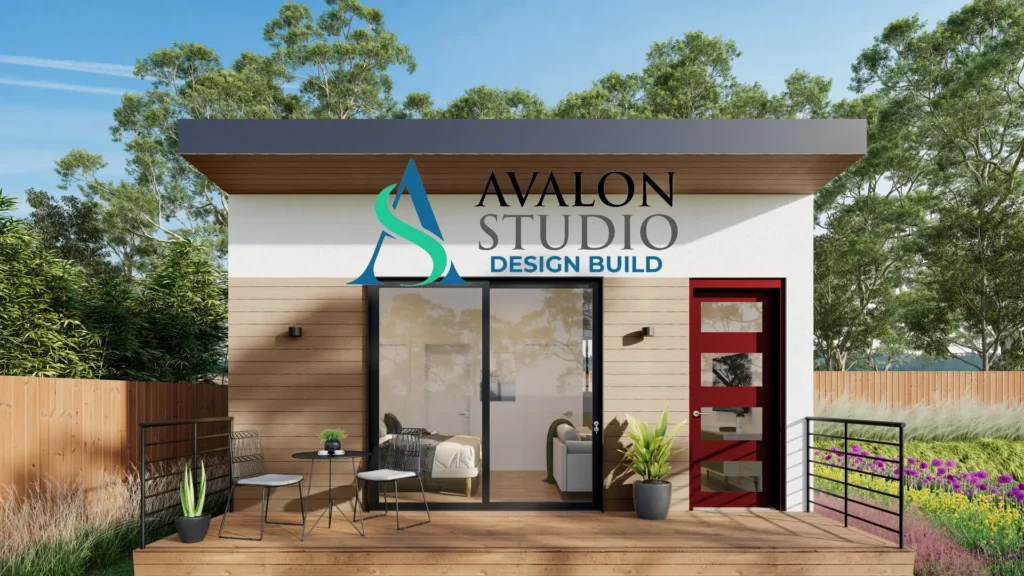Creating an eco-friendly Additional Dwelling Unit (ADU) is not only beneficial for the environment but also for your wallet. By incorporating sustainable practices and materials into the construction process, you can reduce energy consumption, minimize environmental impact, and create a healthier living environment for occupants. Let’s explore how to build a sustainable ADU that prioritizes eco-friendliness without compromising on comfort or style.
Designing for Sustainability
1.Passive Solar Design:
Utilize passive solar design principles to maximize natural light and heat gain while minimizing the need for artificial heating and cooling. Orienting your ADU to capture sunlight and incorporating features like large windows, thermal mass, and shading devices can enhance energy efficiency.
2.Energy-Efficient Appliances:
Choose energy-efficient appliances and fixtures for your ADU, including ENERGY STAR-rated appliances, LED lighting, low-flow faucets, and water-saving toilets. These upgrades can significantly reduce energy and water consumption, lowering utility bills and environmental impact.
3.Insulation and Air Sealing:
Invest in high-quality insulation and air sealing to create a well-insulated building envelope. Proper insulation and air sealing prevent heat loss in winter and heat gain in summer, improving comfort and reducing the need for heating and cooling.
Utilizing Sustainable Materials
1.Recycled and Reclaimed Materials:
Incorporate recycled and reclaimed materials into your ADU construction, such as reclaimed wood flooring, recycled glass countertops, or salvaged fixtures. Not only do these materials add character and uniqueness to your ADU, but they also reduce the demand for virgin resources.
2.Sustainable Wood Products:
Choose sustainably sourced wood products certified by organizations like the Forest Stewardship Council (FSC). Opt for bamboo, cork, or reclaimed wood for flooring, cabinetry, and furniture, as these materials are renewable and have lower environmental impact than traditional hardwoods.
3.Low-impact Finishes:
Select low-VOC (volatile organic compound) paints, stains, and finishes for interior surfaces to improve indoor air quality and minimize off-gassing of harmful chemicals. Look for eco-friendly alternatives to conventional building materials, such as natural linoleum flooring, clay plaster, or recycled tile.
Implementing Energy-Efficient Systems
1.Solar Power:
Consider installing solar panels on your ADU to generate renewable energy and reduce reliance on grid electricity. Solar power can offset energy consumption from lighting, appliances, and heating/cooling systems, resulting in long-term cost savings and environmental benefits.
2.Water Harvesting and Recycling:
Implement rainwater harvesting systems to collect and reuse rainwater for landscaping irrigation, toilet flushing, and other non-potable uses. Graywater recycling systems can also treat wastewater from sinks, showers, and laundry for reuse, further reducing water consumption.
3.Efficient Heating and Cooling:
Choose energy-efficient heating and cooling systems for your ADU, such as ductless mini-split heat pumps, radiant floor heating, or high-efficiency HVAC units. Proper sizing, insulation, and zoning of heating and cooling systems optimize comfort and energy performance.
In brief, building an eco-friendly ADU is a rewarding endeavor that promotes sustainability, energy efficiency, and environmental stewardship. By incorporating sustainable design practices, utilizing eco-friendly materials, and implementing energy-efficient systems, you can create a living space that aligns with your values and reduces your ecological footprint. Whether you’re building an ADU for rental income, multigenerational living, or personal use, prioritizing eco-friendliness can enhance the long-term value and appeal of your property while contributing to a healthier planet.
Learn more about ADU:
Understanding Local ADU Regulations: What You Need to Know Before You Build

